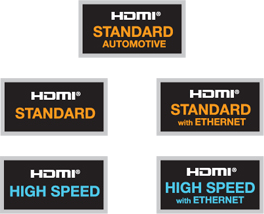From our front-page news:
One of the biggest issues that exists today is confusion over technology. Most of you reading this site are not going to be tech illiterate, but we're of the minority. Millions upon millions of regular consumers walk into brick and mortar stores on a regular basis and find themselves lost. "What kind of cable do I need?", "Does my television even support it?", "What kind of computer should I get for my needs?" and "Do I really need the 'Ultimate Edition' of Windows?" and so forth are common types of questions.
It's important that regular consumers know what to look for when walking into a store, but because many don't do research before doing so, they're lost once they're there. To help the issue, many companies over the years have tried hard to simplify their product line-ups, or provide information right on the product itself, so that people shouldn't have to go to a sales representative and ask questions. Sometimes, these methods work decently well. Other times, they just add to the confusion.
One example of the latter is with HDMI's latest cable-branding standard. Yes, apparently there is more than one kind of HDMI cable out there, and it's not just based on the version of HDMI. With the introduction of HDMI 1.4, the conglomerate of companies that own rights to the technology have unveiled what's supposed to be simpler badges to help consumers find what they need. But it's fairly obvious that if there's five different badges, then it's not that simple.
Of these five, three are "Standard" and two are "High Speed". When I think of HDMI, I tend to think of "1080p", because when high-definition content, like what Blu-ray offers, first became popular, most people used HDMI as the go-to connection. But believe it or not, the "Standard" cables top out at 720p/1080i, so for those who want 1080p, this cable just won't do. Instead, you will (and the majority I'd imagine) need "High-Speed", which fully supports 1080p/60 and 2160p/30, or anything less, like 720p.
Up until this news, I had no idea there were different types of HDMI cables, so I'm not quite sure what it exactly is required to boost it to allow 1080p and higher content, but it's unfortunate we can't just have one cable and one cable only. You don't see multiple versions of Component or DisplayPort cables (except where needed changes for length is concerned), so why complicate things with HDMI?

Five different versions of HDMI 1.4 will be available initially. Starting things off, HDMI Standard and HDMI Standard with Ethernet are the base versions of the new HDMI cables. They’re self explanatory, (if lengthy to type). HDMI Standard Automotive is the third, marking the last of the HDMI Standard series. The final two cable types are HDMI High Speed and HDMI High Speed with Ethernet. The need to add a second tier of cables to the lineup is a bit baffling, and the technical difference between Standard and High Speed HDMI cables is equally strange.
Source: High-Def Digest
It's important that regular consumers know what to look for when walking into a store, but because many don't do research before doing so, they're lost once they're there. To help the issue, many companies over the years have tried hard to simplify their product line-ups, or provide information right on the product itself, so that people shouldn't have to go to a sales representative and ask questions. Sometimes, these methods work decently well. Other times, they just add to the confusion.
One example of the latter is with HDMI's latest cable-branding standard. Yes, apparently there is more than one kind of HDMI cable out there, and it's not just based on the version of HDMI. With the introduction of HDMI 1.4, the conglomerate of companies that own rights to the technology have unveiled what's supposed to be simpler badges to help consumers find what they need. But it's fairly obvious that if there's five different badges, then it's not that simple.
Of these five, three are "Standard" and two are "High Speed". When I think of HDMI, I tend to think of "1080p", because when high-definition content, like what Blu-ray offers, first became popular, most people used HDMI as the go-to connection. But believe it or not, the "Standard" cables top out at 720p/1080i, so for those who want 1080p, this cable just won't do. Instead, you will (and the majority I'd imagine) need "High-Speed", which fully supports 1080p/60 and 2160p/30, or anything less, like 720p.
Up until this news, I had no idea there were different types of HDMI cables, so I'm not quite sure what it exactly is required to boost it to allow 1080p and higher content, but it's unfortunate we can't just have one cable and one cable only. You don't see multiple versions of Component or DisplayPort cables (except where needed changes for length is concerned), so why complicate things with HDMI?

Five different versions of HDMI 1.4 will be available initially. Starting things off, HDMI Standard and HDMI Standard with Ethernet are the base versions of the new HDMI cables. They’re self explanatory, (if lengthy to type). HDMI Standard Automotive is the third, marking the last of the HDMI Standard series. The final two cable types are HDMI High Speed and HDMI High Speed with Ethernet. The need to add a second tier of cables to the lineup is a bit baffling, and the technical difference between Standard and High Speed HDMI cables is equally strange.
Source: High-Def Digest
